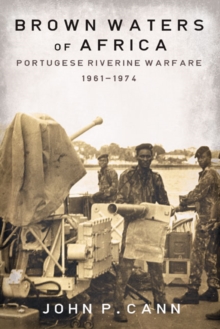
Muddling Through : Muddling Through: the Organisation of British Army Chaplaincy in World War I Hardback
by Peter Howson
Part of the Helion Studies in Military History series
Hardback
Description
As with many other aspects of the British army the outbreak of World War One started a process of change that was to result in a radically different provision of chaplaincy care once the war was over. Nothing was ever simple with army chaplaincy. The war saw an increase in the number of churches becoming involved with the army. The structure had already been under pressure in the first decade of the century with the Catholic Church insisting on new rules for its chaplains. The creation of the Territorial Force added a new dimension after 1907, bringing new players into the mix including the Jewish community. These chaplains challenged the traditional Garrison Church based ministry of the regulars. The book examines the muddled state of chaplaincy in August 1914 and looks at how chaplains were mobilized. It then reviews how organizational changes were often the result of pressure from the different churches. The unilateral decision of the Church of England, in July 1915, to leave the unified administration in France that had existed since August 1914 is examined in the light of the availability of the relevant volume of the diaries of Bishop Gwynne, a key participant in the change. Chapters also look at the experience of other Imperial forces and of the casualties suffered by chaplains. These all provide evidence of the expectations that various groups had of army chaplains. It is often forgotten that two chaplains were captured during the retreat from Mons in 1914. They were never far from the fighting throughout the war. The experiences of the war meant that the pre-war structure needed reform. The final chapter looks at the structure that was created in 1920 and then survived virtually unchanged until 2004. Army chaplaincy has always been a mix of Church, Army and State. Such a coming together inevitably lead to confusion. Not surprisingly one of the themes was the muddle that resulted. Even so army chaplaincy ended the war with a much higher profile than the one it had in 1914. This was recognised by the addition of 'Royal' creating the RAChD. Anglicans, Catholics, Presbyterians, Methodists, and other faith groups, as well as military historians will find this book of interest as it overturns a number of myths and puts chaplaincy in its wider context.
Information
-
Only a few left - usually despatched within 24 hours
- Format:Hardback
- Pages:240 pages, c 10 b/w photos
- Publisher:Helion & Company
- Publication Date:15/02/2013
- Category:
- ISBN:9781909384200
£25.00
£20.05
Information
-
Only a few left - usually despatched within 24 hours
- Format:Hardback
- Pages:240 pages, c 10 b/w photos
- Publisher:Helion & Company
- Publication Date:15/02/2013
- Category:
- ISBN:9781909384200










